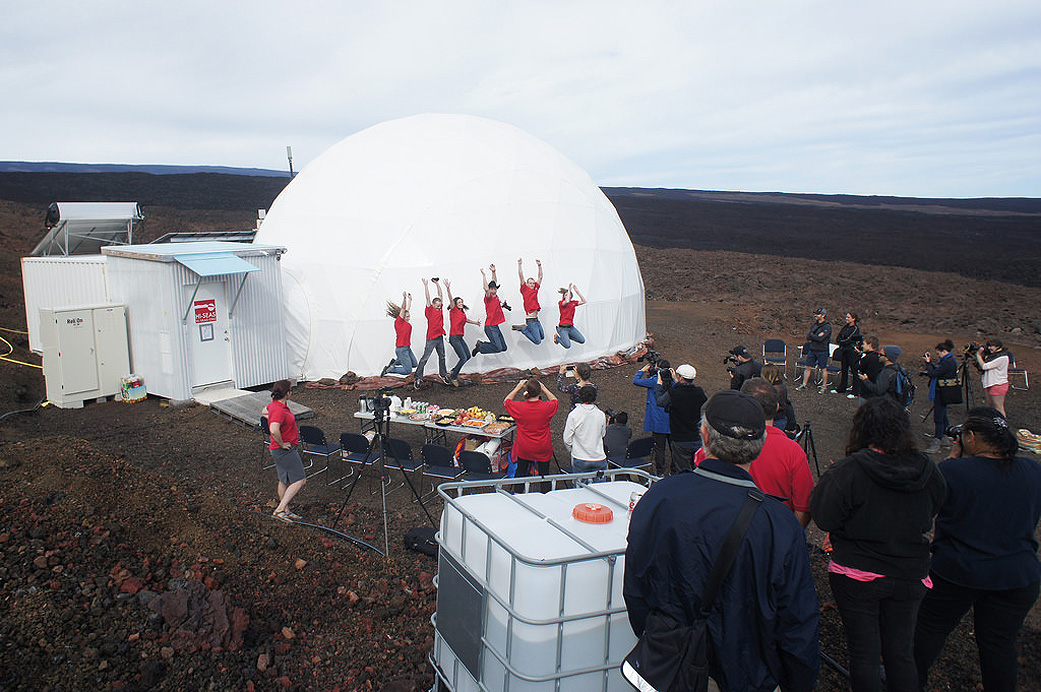A team of six volunteer scientists completed one of the most extensive studies of the demands of life on a distant world by closing themselves off to the rest of the world for eight months in an effort known as HI-SEAS. Their chore wasn’t so much to stay alive, but to see how isolation and the lack of privacy in a small group affects social aspects of would-be explorers.
The research is expected to bear directly on NASA’s decisions when composing crews for future missions to Mars. The group also experimented with many budding technologies future Mars explorers could employ during real expeditions to the Red Planet. It was the third and longest of the simulation missions. The next simulation is planned to last a year. A mission to Mars may take two and a half to three years, with approximately half of that time on the planetary surface.
HI-SEAS, short for Hawaii Space Exploration Analog and Simulation, took place atop the Mauna Loa volcano in Hawaii. The site was chosen because it shows little signs of human existence and even plants are scarce at that altitude. In other words, it’s one of the few places on Earth that can offer researchers few of the signs of their home planet without having to leave Earth.
Although social interactions were the primary study area for this mission, the teams had to do without almost all the normal elements of human life on Earth. For instance, they ate only food that was freeze-dried or that would be stable on a long-duration spaceflight. Water and electricity were extremely limited – not just for drinking, but for showering and other uses. They left the habitat once a week to conduct field studies on foot wearing suits akin to those being designed for astronauts on a Mars excursion.
The dome the team used was erected 8,000 feet above sea level and was basically a small, two-story house. The first floor, which covered about 900 square feet, housed the common areas such as lab and shower while the upper level’s 424 square feet housed the staterooms for the participants along with a half-bath. An attached workshop was made from a converted shipping container. The design was tied closely to the amount of space a crew on Mars is likely to have for a habitat.
Project leaders also chose the volcano as a site because its geology offered the crew a place to take samples and conduct field studies once a week outside the habitat. Astronauts on a journey to Mars would do the same thing during their time on the surface, just as the Apollo astronauts did on the moon. Also, the volcanic surface is akin to the Martian soil and is used in many cases to simulate Martian surfaces in other studies.
Noting that there are obvious limits to conducting deep-space simulations on Earth, scientists said there are many aspects that can be suitably studied, principally the crew interactions and how people change how they see others after a long time in one another’s presence. More than just whether or not they get along, a crew’s makeup will dictate how successfully other science is performed during a mission to deep space.
Researchers are excited about the work that was completed during the eight-month mission but will take some time before detailing their findings in academic journals and at technical conferences. In the meantime, they also are prepping for a 1-year mission at the habitat slated to begin in August.



























